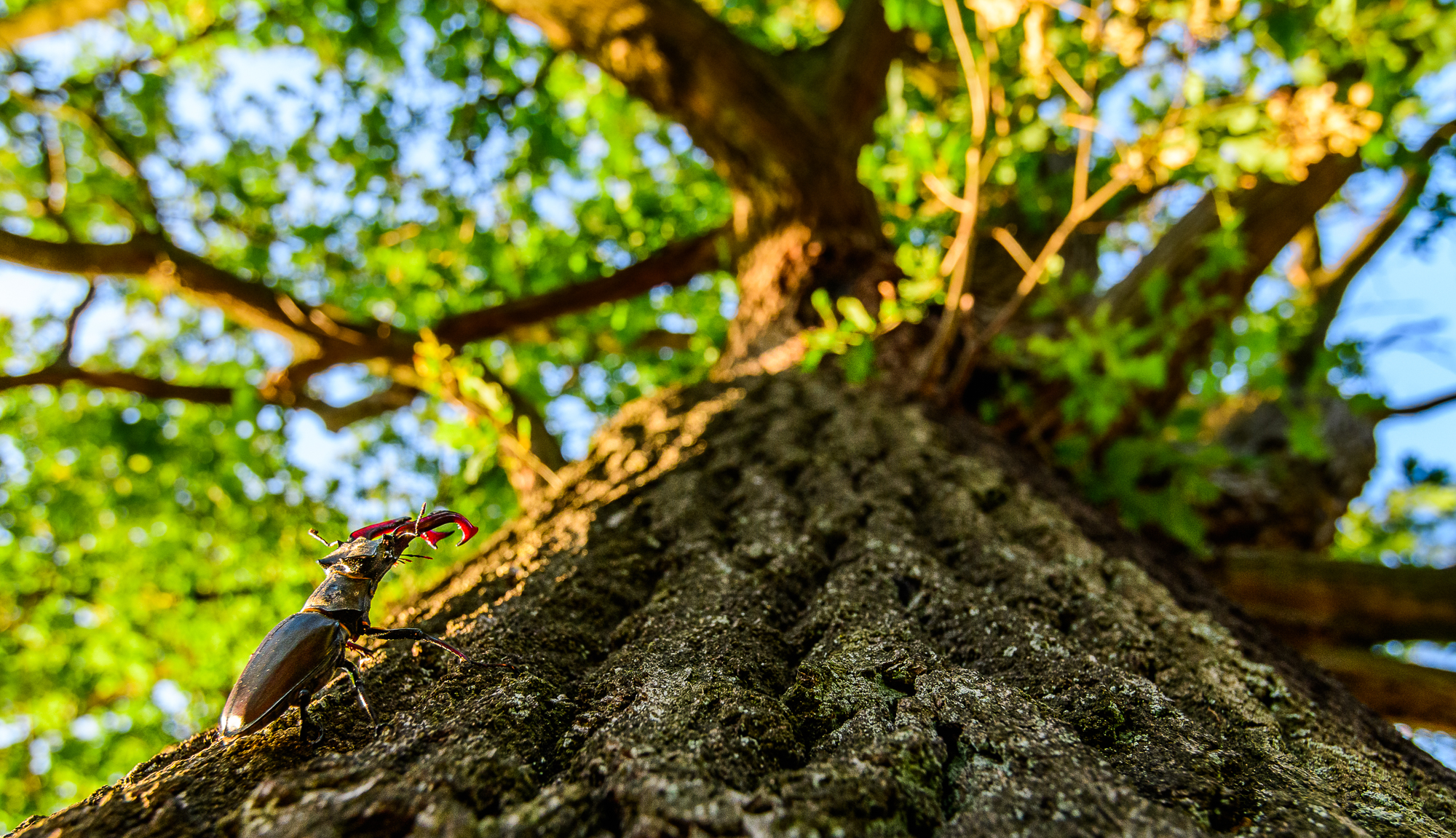My passion for nature started growing at a very young age already. My dad, who is a nature photographer as well, often took me with him when he went to the forests close to our home on the Veluwe region.
This region is the largest connected natural area in the Netherlands. He showed me wildlife such as red deer, roe deer, wild boar, red fox and the badger. Soon, I wanted to photograph the animals myself, which boosted my interest in their ecology and habitats. At around the age of 10, I already told everyone that I wanted to become a forester. Over the years, this passion grew even stronger and I was very fortunate that close to my home there was a study programme exactly matching my interests: Forest and Nature Conservation at Wageningen University. After receiving my Bachelor’s degree in 2018, I also completed my Master’s programme last December.
During my studies, my knowledge on forest ecosystems and their management hugely increased. We were taught about many aspects of forests, ranging from tree species recognition in the Netherlands and the ecological importance of forests, to people’s perceptions of forests and timber trade in the Tropics. We also got a lot of practical experience with, for example, studying tree growth in response to climatic conditions and writing of management plans for natural areas. Yet, as I have always been most interested in wildlife, I specialised in wildlife ecology and conservation. The larger projects I worked on focussed on distribution patterns of mammals, both in natural and urban environments, and the impacts of human disturbance on birds. Besides studies focussing on natural factors only, I think that including the human is becoming increasingly important in a world in which humans and wildlife live close to each other.
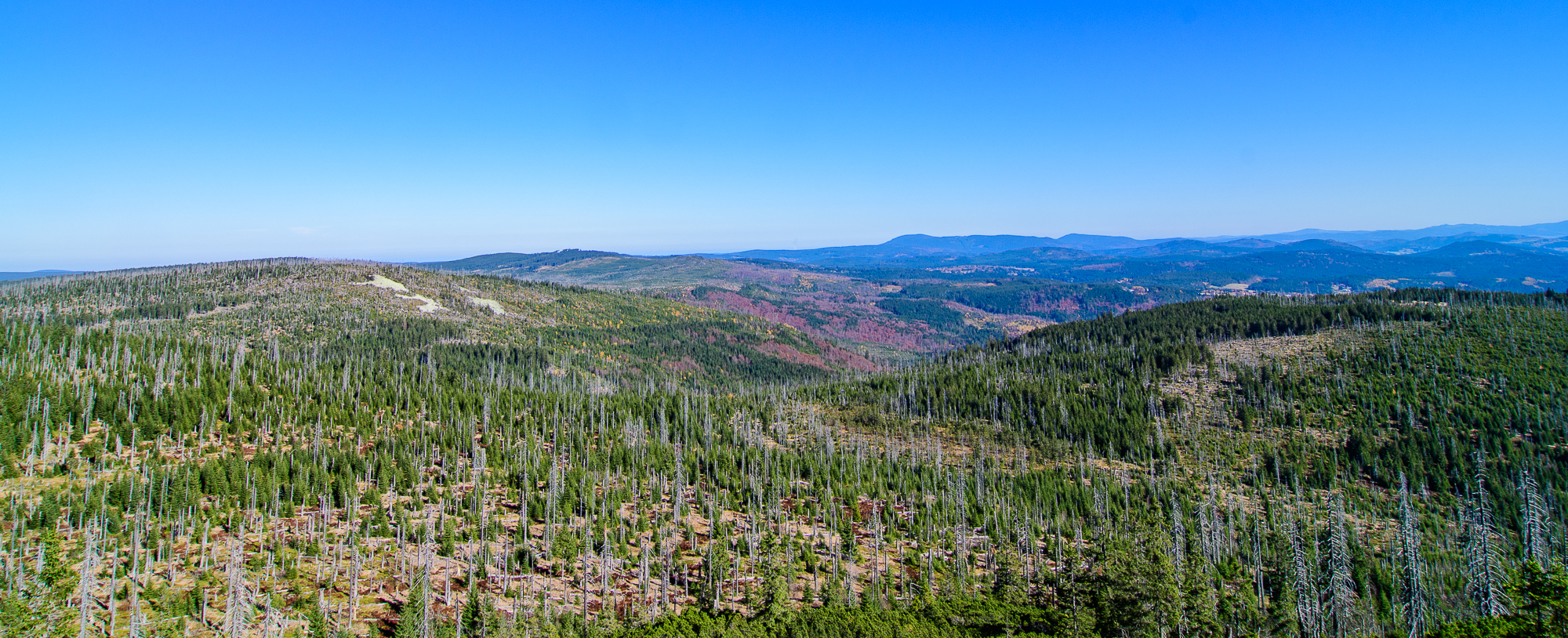
IMAGE ABOVE: Bavarian Forest, Germany. In total, according to the European Environment Agency, European forests are home to around 10,000 threatened species of trees, birds, mammals, other vertebrates, invertebrates, vascular plants and fungi. Forestry, climate change and pest outbreaks, however, may cause increased mortality among trees. | © Jeroen van Wijk
The Importance of Forests
Forests are of vital importance for the well-being and functioning of our planet. Forests provide various ecosystem services, which can be divided over four categories:
- Provisioning services, such as food and wood production;
- Regulating services, such as water purification and regulation;
- Cultural services, such as recreation and education;
- Supporting services, such as habitat provision and nutrient cycling.
When it comes to conservation, biodiversity is often used as an indicator for the health of an ecosystem. In general, a system where many species are present will be considered to be healthy. Forests are among the most diverse ecosystems on land, as they provide a huge amount of microhabitats for different organisms. Just take a quick look at a tree: many passerine birds nest in and forage on the branches or stem. Tree cavities function as shelter for e.g. owls and mammals. Mosses, lichens and mushrooms grow on the bark. Many insect species live under the bark and fungi live between the roots.
The older the tree, the more microhabitats it provides. Even when dead, a tree plays a crucial role in the functioning of a forest ecosystem. Hence, the oldest forests contain the highest biodiversity. In total, according to the European Environment Agency European forests are home to around 10,000 threatened species of trees, birds, mammals, other vertebrates, invertebrates, vascular plants and fungi.
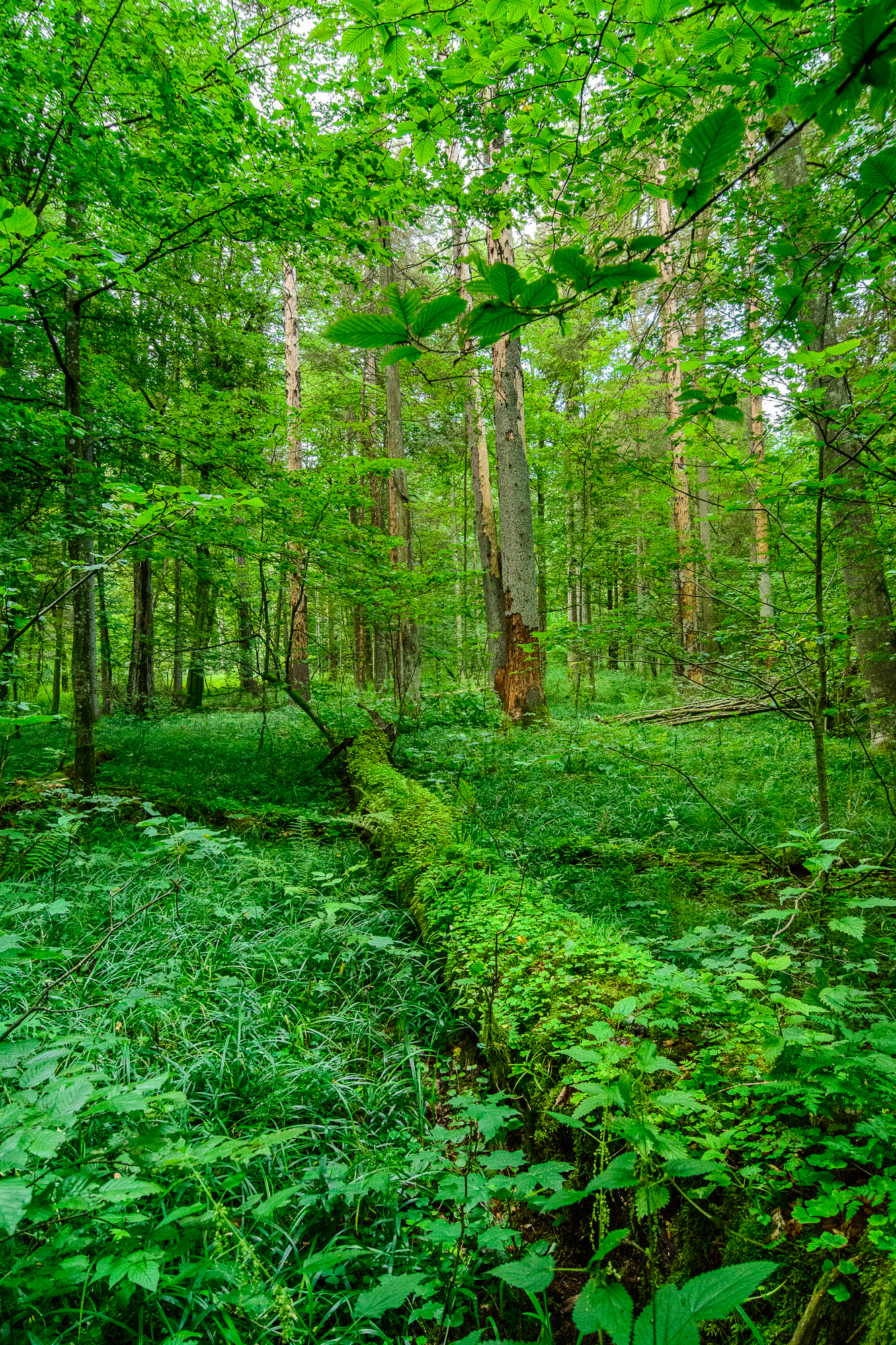
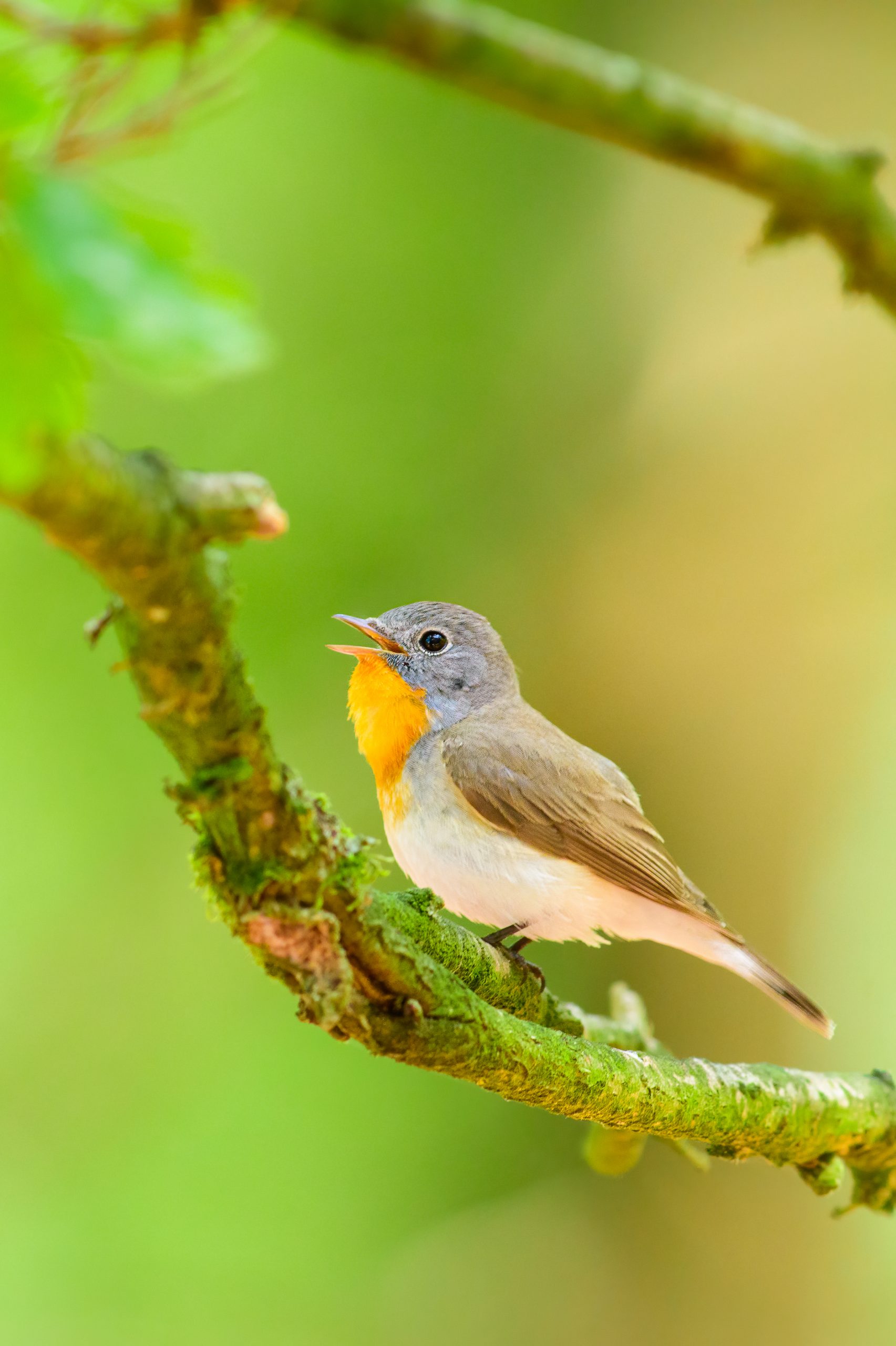
IMAGE LEFT: The primeval forest of Bialowieza, Poland. Dead wood forms a crucial link in a forest ecosystem. Therefore, in today’s forestry practices, dead wood is often (partly) left behind after cutting. | © Jeroen van Wijk
IMAGE RIGHT: Red-breasted flycatcher (Ficedula parva). When it comes to conservation, biodiversity is often used as an indicator for the health of an ecosystem. In general, a system where many species are present will be considered to be healthy. | © Jeroen van Wijk
Nowadays, forests also function as refuges for species that were prone to hunting in the past. European bison, for example, are typically associated with dense forest ecosystems. However, recent studies indicate that they originally populated open and semi-open landscapes and that forests do not fulfill their requirements. Fear of humans, however, makes the bison hide in the forests during the day and only use their preferred habitat between dusk and dawn. This same refuge function makes that forests form important connections between natural areas through which animals disperse.
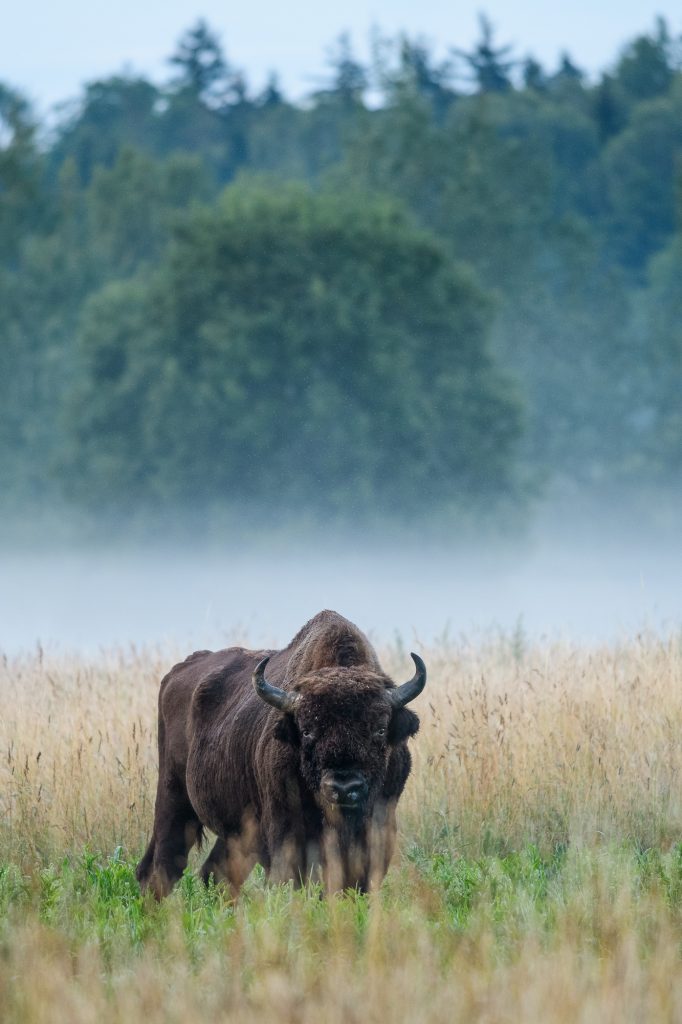
IMAGE ABOVE: European bison (Bison bonasus) are typically associated with dense forest ecosystems, but forests mainly function as a refuge during the day. Fear for humans makes that bison only use their preferred habitat – grassland – between dusk and dawn. | © Jeroen van Wijk
Problems and Challenges
European forest ecosystems face various threats. Some of them originate from the management and exploitation systems in the past. For example, clearcutting used to be a very common forestry practice. Subsequently, trees were replanted on the cutting sites. Ideally, one would have a heterogeneous forest, which is resistant towards biotic and abiotic forces. Yet, the consequence of planting forests after clearcutting is that the new forests are very homogeneous.
Homogeneous forests are known to be hugely impacted by e.g. storms, droughts or pest outbreaks. Moreover, the combination of homogeneous forests and climate change, causing an increase in extreme weather, can cause critical damage to forests. A well-known example are outbreaks of the bark beetle, causing high mortality in coniferous forests. Nowadays, the higher annual temperatures favour the beetles’ reproduction and old, even-aged forests are ideal for spreading of the beetles. Through this mechanism, huge surfaces of coniferous forests will die if measures against the beetles are not undertaken. Also, keep in mind that it takes decades for a replanted forest to approach the biodiversity level of an old-growth forest!
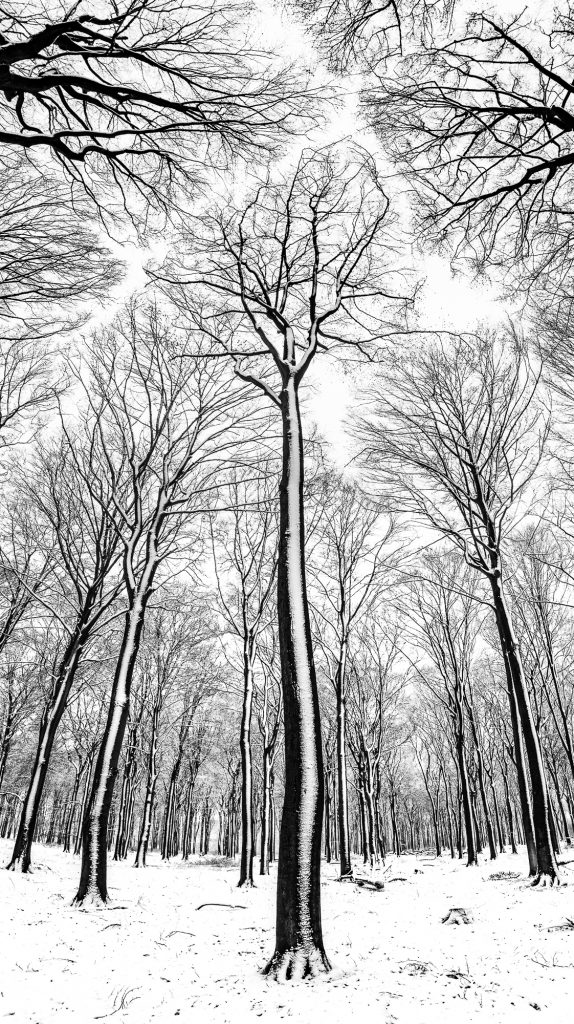
IMAGE ABOVE: Beech forest in the snow. Homogeneous forests are known to be hugely impacted by e.g. storms, droughts or pest outbreaks. Moreover, the combination of homogeneous forests and climate change, causing an increase in extreme weather, can cause critical damage to forests.| © Jeroen van Wijk
Besides the forests themselves, wildlife living in forest ecosystems is negatively impacted in several ways as well. Especially in densely-populated Western Europe, natural areas are fragmented by human infrastructure. Impacts of fragmentation on wildlife can be direct, like road kills, but can also be indirect. Structures like motorways and cities can function as migration barriers, causing e.g. the loss of genetic diversity within populations or food depletion.
For some species of herbivores, forests themselves do not provide sufficient food. Large grazers, like bison, or selective feeders, like deer, need either a huge amount of food or food of very high quality.
The availability thereof can be low in forests. Therefore, many herbivore species can be found foraging on open fields adjoining forests. These areas are also extremely important for a great variety of ground-nesting birds, reptiles and insects. However, due to missing (eradicated) keystone species in the food web, open habitats could eventually disappear as a result of forest encroachment if no management is applied.

IMAGE ABOVE: Structures like motorways and cities can function as migration barriers, causing e.g. the loss of genetic diversity within wildlife populations or food depletion. In fact, many herbivore species can be found foraging on open fields adjoining forests in order to access additional food sources. | © Jeroen van Wijk
Solutions
Fortunately, for all these challenges there are solutions. And they are applied more and more! Clearcutting often is not applied on the large sale on which it was applied in the past. Surfaces are smaller. Cutting happens in phases and some old trees are left standing to provide new seeds. By working this way, more heterogeneity is created in a ‘refreshed’ forest. This can be seen as a compromise between forestry and biodiversity conservation. Furthermore, dead wood is often (partly) left behind after cutting, as it is a crucial link in the food chain.
The relationship between herbivores and forest regeneration has been studied a lot over the years. In areas where foraging pressure is too high, exclosures are often placed around young forest stands until the trees have matured enough to resist herbivory. Additionally, herbivore populations are managed through hunting in order to try to replace the function of large carnivores and thus to create more balance in the ecosystem.
Luckily, several of these species are making a comeback. Especially the wolf, commonly recognized as another vital link in the ecosystem, is successfully re-colonizing entire Europe.
For a few years in row now, wolves are even reproducing in the tiny, crowded Netherlands. It illustrates how well these intelligent animals can still find their place in today’s human-dominated landscapes, and how wild animals benefit from initiatives such as wildlife overpasses, which reduce the chances of road kills and thus remove migration barriers. Of course, increases in large carnivores can cause conflicts with farmers located close to the carnivores’ territories. However, it has already been proven that proper fencing significantly reduces livestock kills. Moreover, in the case of wolves, scientists repeatedly found that wolves hardly kill livestock anymore after they established a territory.
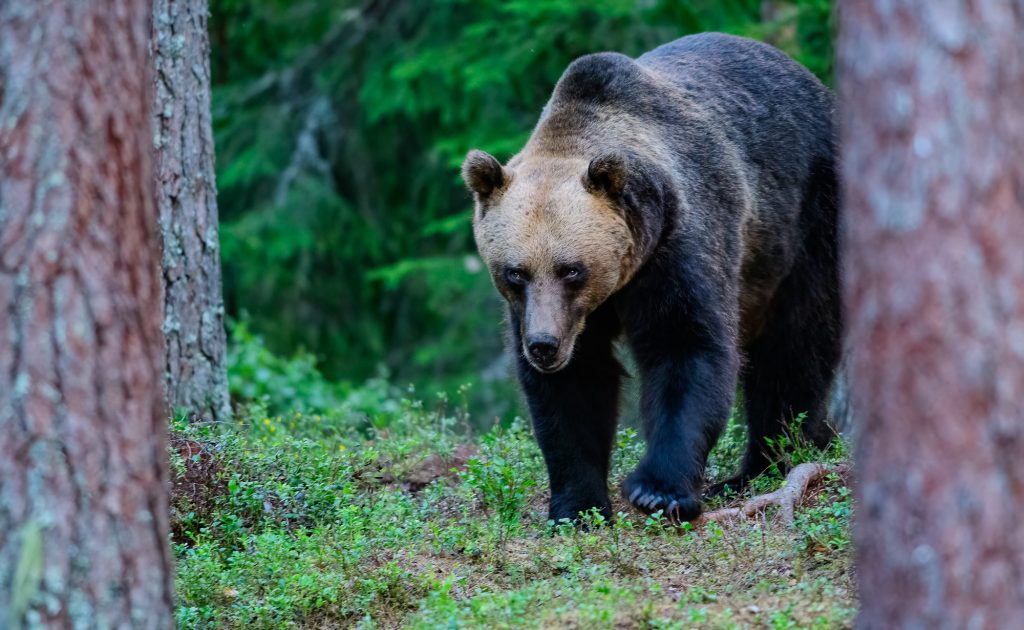
IMAGE ABOVE: Organizations, such as Rewilding Europe are doing a great job in rewilding nature areas by reintroducing large herbivores and carnivores or by stimulating their natural comeback. | © Jeroen van Wijk
In other cases, wildlife needs some human help to make a comeback. Rewilding Europe, for example, is doing a great job in rewilding nature areas by reintroducing large herbivores and carnivores. Through grazing, taking sand baths, et cetera, large herbivores maintain the important open areas in forest ecosystems without further human intervention. Carnivores, in turn, help preventing areas from becoming overgrazed. Besides the reintroduction, Rewilding Europe also works with the local people in the surroundings of the rewilding sites to create awareness and, eventually, acceptance of the returning species. I think that understanding of the ecology and willingness to live alongside carnivores, and other wildlife, are key to a peaceful co-existence.
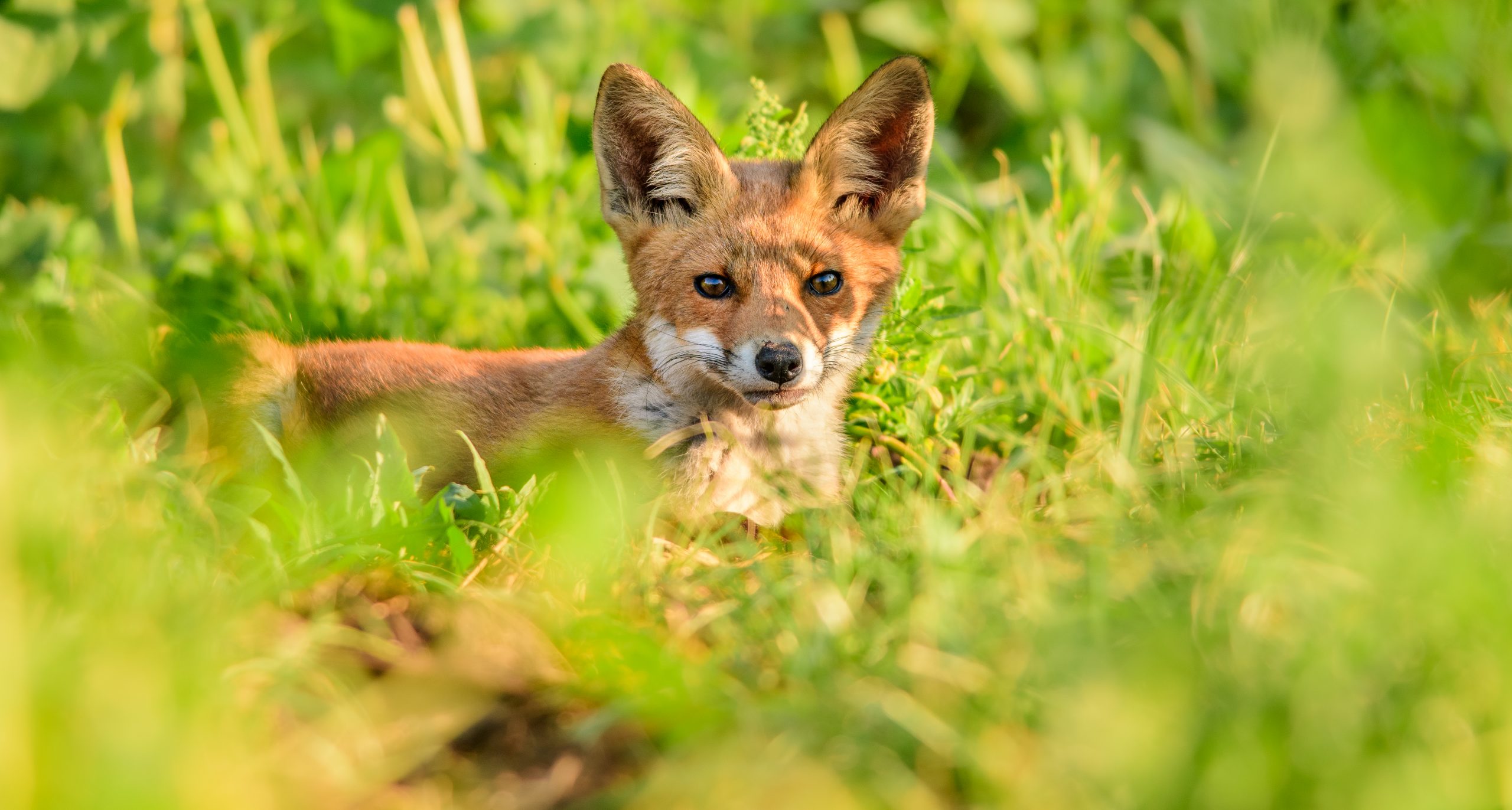
IMAGE ABOVE: Red fox (Vulpes vulpes). I think that understanding of the ecology and willingness to live alongside carnivores, and other wildlife, are key to a peaceful co-existence. | © Jeroen van Wijk
Conservation and Creativity
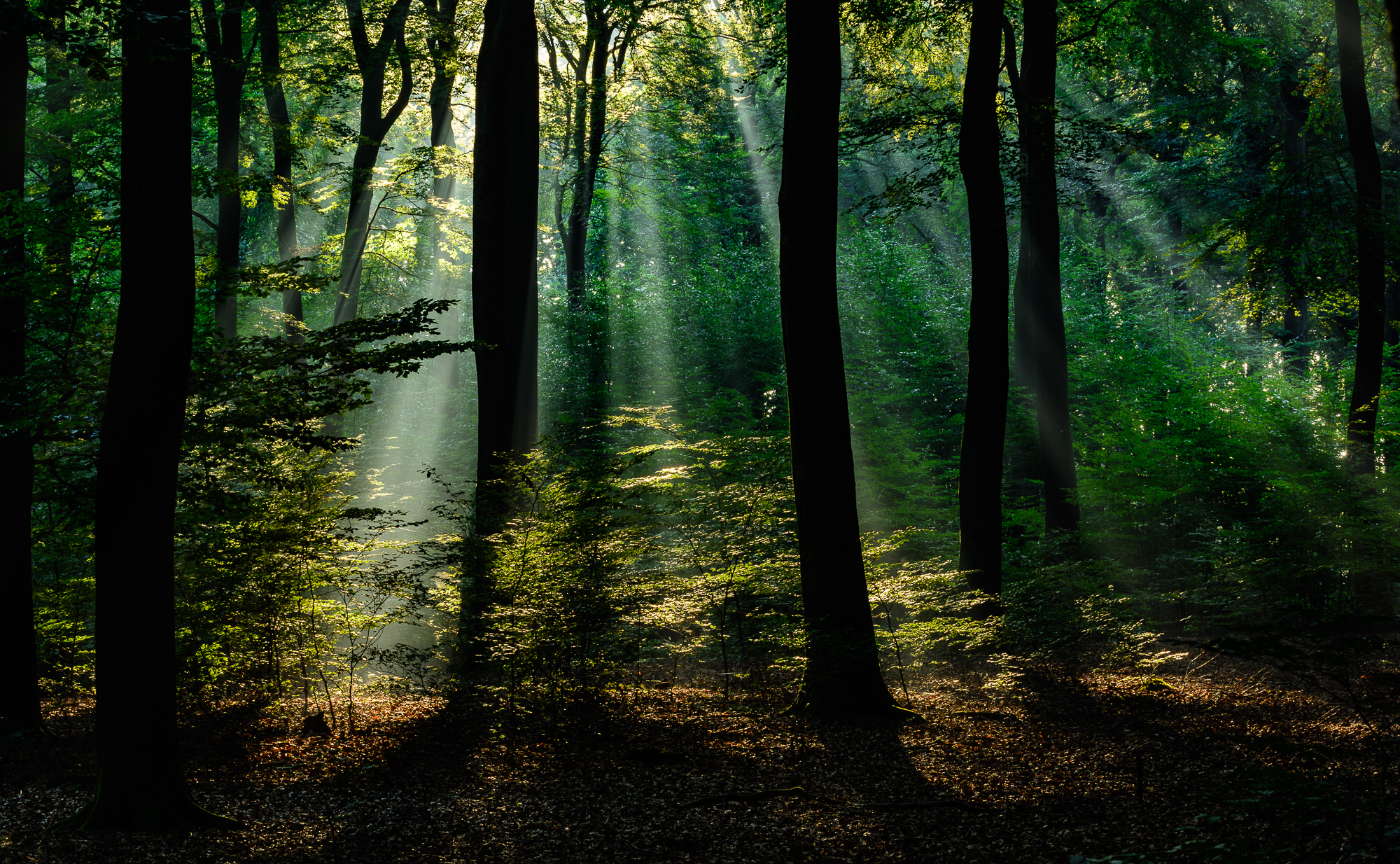
IMAGE ABOVE: Over the last 30 years, the area of forests in Europe has increased by 9%, according to FOREST EUROPE. Increased awareness of the importance of forests, better legislation, the establishment of protected areas and increased scientific understanding have all contributed to this increase. | © Jeroen van Wijk
A Postive Outlook for the Future
I am quite positive about the future of Europe’s forest ecosystems. Over the last 30 years, the area of forests in Europe has increased by 9%, according to FOREST EUROPE. Increased awareness of the importance of forests, better legislation, the establishment of protected areas and increased scientific understanding have all contributed to this increase.
According to Greenpeace and the IUCN, however, climate change and harvesting of old-growth forests will pose the biggest challenge in the upcoming years. If science can come up with measures to protect forests against the effects of climate change, rewilding processes continue to take place, and damaging of old-growth forest can be further reduced, I believe that Europe’s forest cover and its biodiversity can keep increasing, be it in a different species composition.
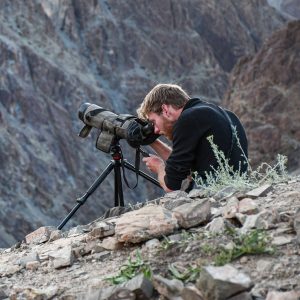
Written by
Jeroen van Wijk
Jeroen van Wijk (The Netherlands, 1996) started photographing wildlife around the age of twelve. Finding wildlife required understanding of the animals’ patterns and behaviours, which is where his passion for ecology originates from. During his BSc and MSc studies in Forest and Nature Conservation at Wageningen University, The Netherlands, Jeroen improved his skills and knowledge to further understand wildlife and ecosystems. By combining scientific knowledge and photography, Jeroen aims to raise awareness of the beauty of nature and the need to conserve it.
Based in the Netherlands | www.jeroenvanwijk.myportfolio.com

Edited by
Lana Tannir
Lana Tannir is the founder and editor-in-chief of Creatives for Conservation. A professional landscape and wildlife filmmaker and photographer, she specializes in nature conservation and animal welfare projects. Through her stories, she strives to promote global change by raising awareness, advancing education and inspiring people to act.
Based in Germany | www.lana-tannir.com
Join the Journey
Subscribe to receive more stories about nature and wildlife conservation.
Discover Our Stories
Explore more inspiring stories written by our creative conservationists.

Amazon of the North
The Great Bear Rainforest faces many environmental threats. Deforestation of the temperate rainforests, the construction of fish farms and pipelines, commercial fishing of herring in spring, and trophy hunting are just some of them. Photographer and cinematographer, Niklas Weber, documents the challenges of this ecosystem and examines potential solutions.
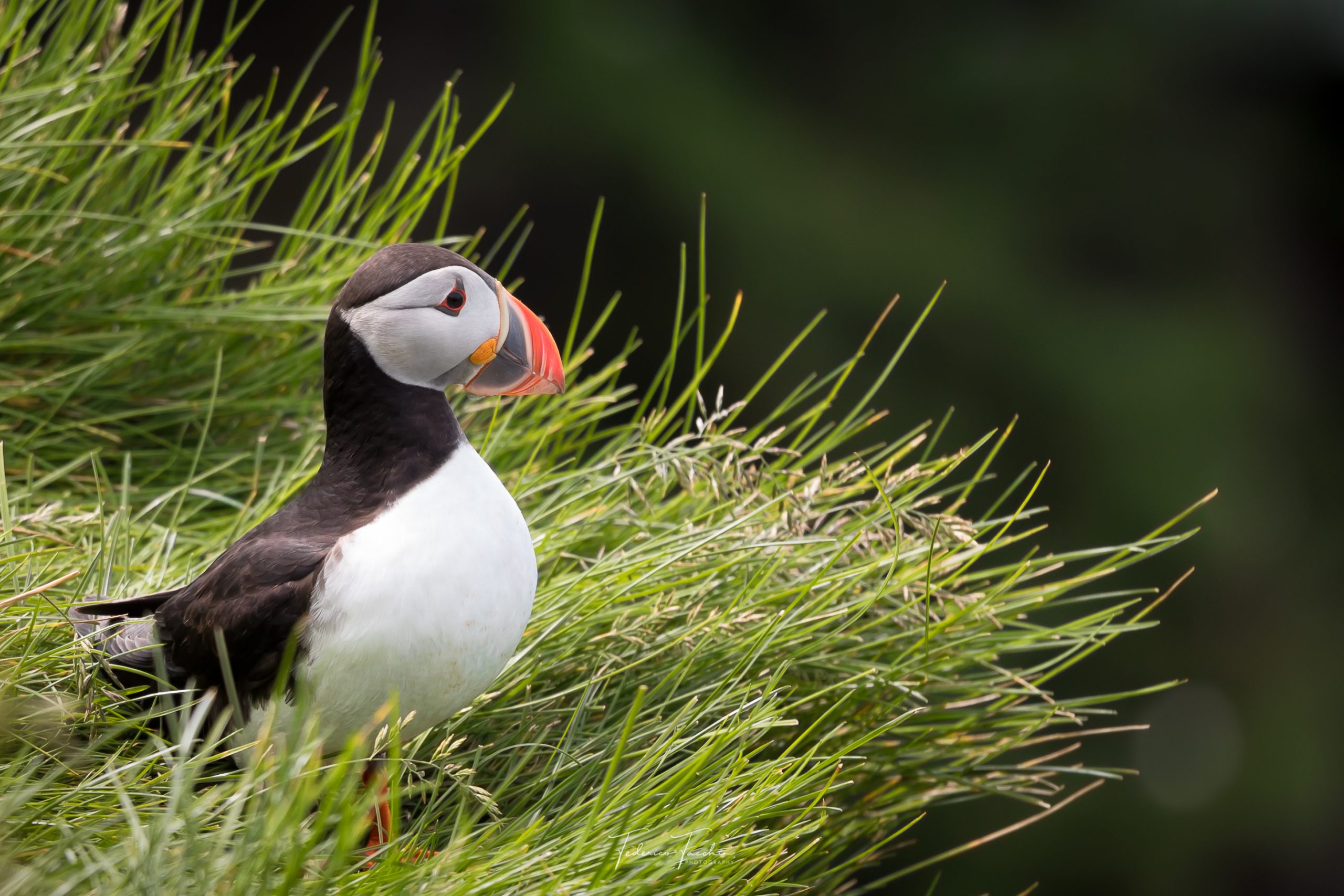
On the Brink: Atlantic Puffins in Iceland
While not considered an endangered species, Atlantic Puffins are nevertheless facing numerous challenges in Iceland. Overfishing, pollution, climate change and even hunting have led to a population decline by 45.6% between 2003 and 2017. Marine biologist, science teacher and photographer Federico Facchin shares his encounters with this species and discusses the need to protect them.
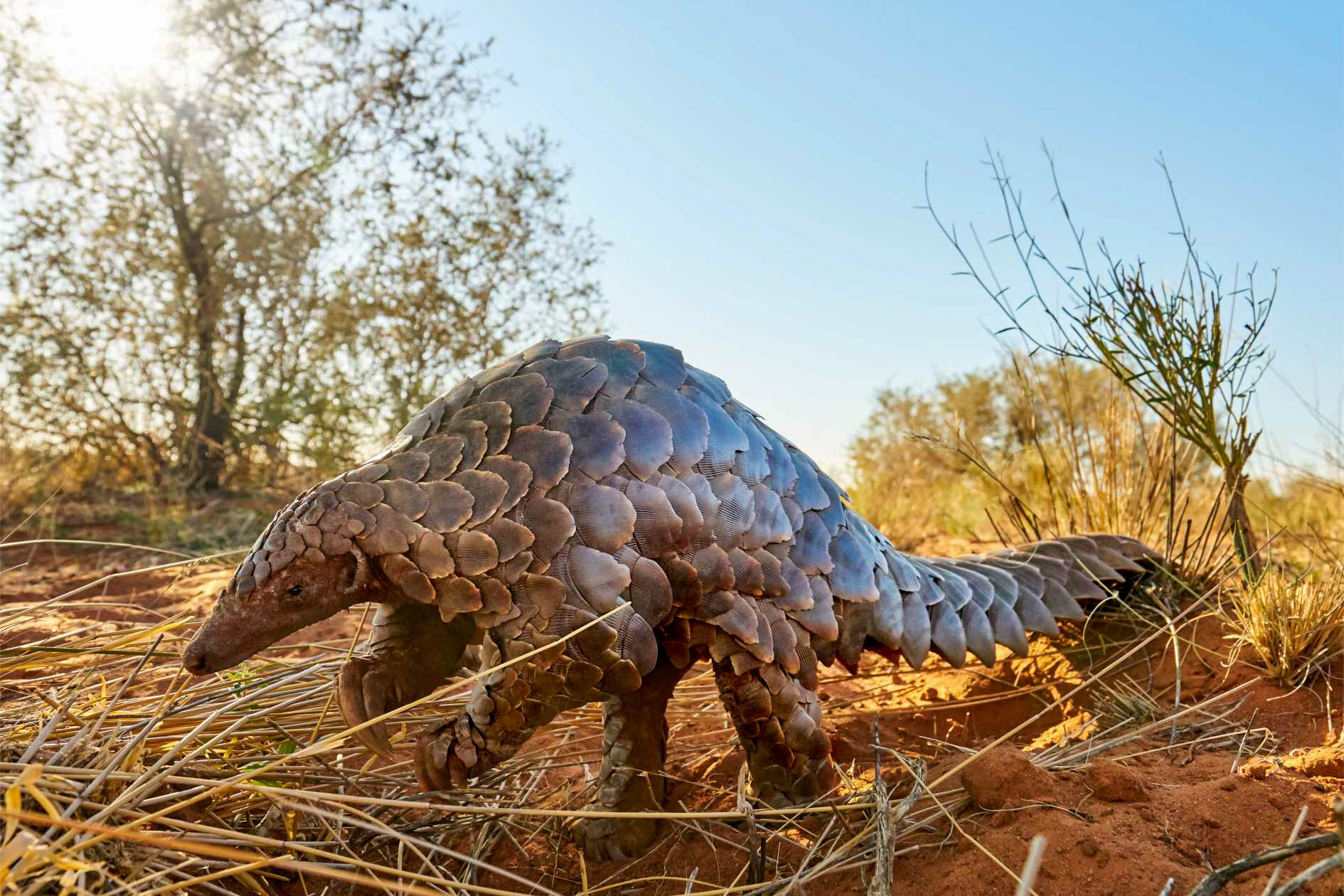
Saving Pangolins with Wild & Free
As the world’s most trafficked animal, the pangolin is a victim of horrendous injustice and cruelty. A pangolin is poached every 5 minutes, while 125,000 pangolins are illegally traded each year. Staggered by this statistic, Geraldine Morelli supports pangolin conservation, rehabilitation and release in Asia and Africa with her UK-based charity Wild & Free.
